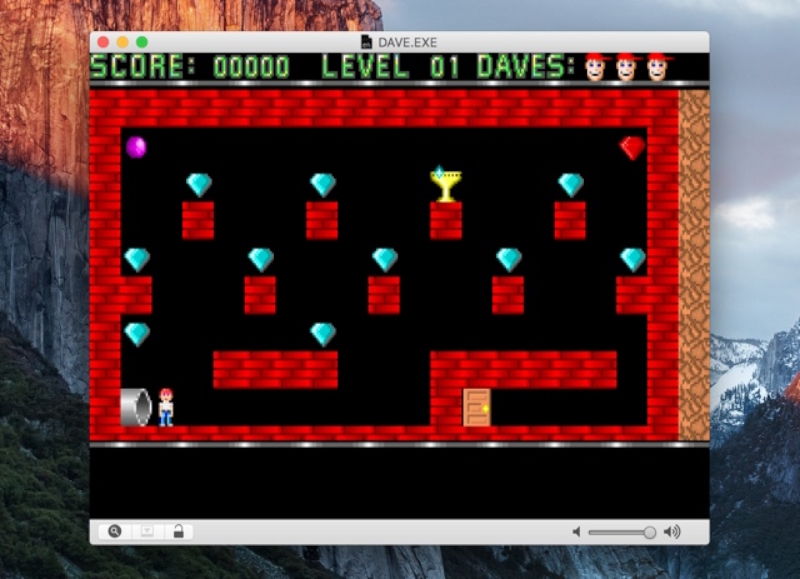To enjoy the nostalgia of classic DOS games on a modern Mac can seem like a challenge at first glance. The stark difference in operating systems and the technological advancements since the days of DOS create a unique obstacle. However, the love for these timeless classics has kept the spirit of DOS games alive, and fortunately, there are several methods to overcome these hurdles. This article aims to guide you through the processes, ensuring you can relive your favorite DOS gaming moments on your Mac with minimal hassle.

Introduction
DOS games hold a special place in the hearts of many. They remind us of a simpler time when graphics were pixelated, gameplay was straightforward yet addictive, and the sound effects were charmingly rudimentary. While modern games offer immersive experiences, the nostalgia associated with DOS games is incomparable. However, running these games on a modern Mac isn’t as straightforward as on a vintage PC. This is primarily due to the differences in operating systems; macOS is UNIX-based, while DOS games were designed for Microsoft’s Disk Operating System. Despite these differences, various tools and emulators have been developed to bridge this gap, allowing you to enjoy a vast library of DOS games on your Mac. Below, we provide detailed instructions on how to utilize these solutions.
1. Using DOSBox
DOSBox is an open-source DOS emulator designed for running DOS applications, including games, on modern operating systems. It’s highly compatible, making it a popular choice for playing DOS games.

Step-by-Step Guide:
- Download DOSBox for Mac: Visit the official DOSBox website and download the latest version of DOSBox for macOS.
- Install DOSBox: Open the downloaded .dmg file and drag the DOSBox application to your Applications folder.
- Prepare Your Game Files: Ensure your DOS game files are on your Mac. It’s best to organize them in a dedicated folder.
- Launch DOSBox: Open DOSBox from your Applications folder.
- Mount Your Game Directory: In the DOSBox window, type
mount C ~/path/to/your/gamefolder(replace~/path/to/your/gamefolderwith the actual path to your game files). - Access Your Game Directory: Type
C:to switch to the mounted drive. - Start Your Game: Navigate to the game’s directory (if needed) and run the game executable, usually by typing its name (e.g.,
GAME.EXE).
2. Using Boxer
Boxer is a DOS game emulator specifically designed for macOS, providing a user-friendly interface to manage and play DOS games.

Step-by-Step Guide:
- Download and Install Boxer: Go to the Boxer website and download the application. Drag Boxer into your Applications folder to install it.
- Prepare Your Game: Boxer works with game files wrapped as .boxer files, but you can also use it with standard DOS game folders.
- Launch Boxer: Open Boxer from your Applications folder.
- Import Your DOS Games: Drag your DOS game folder onto the Boxer window to import it. Boxer will automatically try to configure the game for you.
- Play Your Game: After importing, select your game from Boxer’s library and click ‘Play‘ to start gaming.
3. Running Windows via Boot Camp (for Intel Macs) or Parallels (for Intel and M1/M2 Macs)
For those who want a more comprehensive solution, running Windows on your Mac can allow you to use Windows-based DOS game launchers.
Boot Camp (Intel Macs Only):

- Install Windows using Boot Camp Assistant: Found in the Utilities folder, Boot Camp Assistant guides you through installing Windows on a partition of your hard drive.
- Install DOSBox on Windows: Once Windows is installed, you can download and install DOSBox within the Windows environment and run DOS games as on a PC.
Parallels Desktop (Intel and M1/M2 Macs):
- Download and Install Parallels Desktop: Visit the Parallels website, purchase if necessary, and download the software.
- Install Windows in Parallels: Follow the Parallels instructions to create a new virtual machine and install Windows.
- Install Windows in Parallels: Follow the Parallels instructions to create a new virtual machine and install Windows.
- Install DOSBox on Windows: Within your Windows virtual machine, download and install DOSBox to play your DOS games.
Conclusion
Despite the initial challenges, running DOS games on a Mac is entirely possible with the right tools and a bit of setup. Whether you prefer the straightforward emulation of DOSBox, the Mac-focused design of Boxer, or the versatility of running a full Windows system through Boot Camp or Parallels, there’s a solution that fits your needs. Each method has its advantages, and exploring them can be part of the fun, bringing your beloved DOS classics back to life on your modern Mac.






